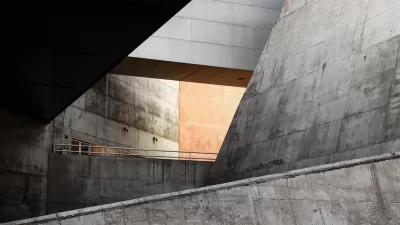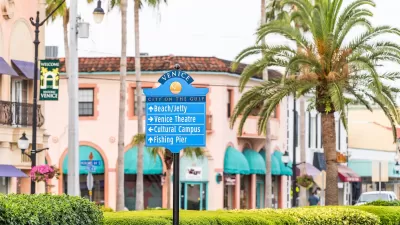Anthony Flynt explores the motivations behind Robert A.M. Stern's recent revival of the Garden City as a model for future development. Among the benefits of the model proposed by Ebenezer Howard in 1902, according to Stern: equity and comfort.
"Stern has written many large books," writes Flynt, "but with Paradise Planned, he is on a particular mission: to celebrate the 19th century town planning movement, and suggest the century-old template holds useful lessons for 21st century development."
The book's archive of garden cities is embedded on 12 pounds and 1,000 pages, but the key question, according to Flynt, is whether the Garden City is a model that actually works.
Stern also provides instructions for making garden cities a model for future development: "Legacy cities such as Detroit may be perfect testing grounds, he argues, not least because the infrastructure is in place for a reinvention of the urban grid. The key ingredients in the recipe — a town square, a church, a transit station, a corner store, hotel, smaller houses (think Forest Hills in Queens) — need only be dispensed in quantities that are not as intensive as Midtown Manhattan."
Flynt's exploration of the topic also discusses Howard's mathematic approach to equity and another under-appreciated benefit of the neotraditional design components of garden cities: unlike much modernist design, historic forms provide comfort.
FULL STORY: Why the 'Garden City' Is Making an Unlikely Comeback

Alabama: Trump Terminates Settlements for Black Communities Harmed By Raw Sewage
Trump deemed the landmark civil rights agreement “illegal DEI and environmental justice policy.”

Planetizen Federal Action Tracker
A weekly monitor of how Trump’s orders and actions are impacting planners and planning in America.

Why Should We Subsidize Public Transportation?
Many public transit agencies face financial stress due to rising costs, declining fare revenue, and declining subsidies. Transit advocates must provide a strong business case for increasing public transit funding.

Understanding Road Diets
An explainer from Momentum highlights the advantages of reducing vehicle lanes in favor of more bike, transit, and pedestrian infrastructure.

New California Law Regulates Warehouse Pollution
A new law tightens building and emissions regulations for large distribution warehouses to mitigate air pollution and traffic in surrounding communities.

Phoenix Announces Opening Date for Light Rail Extension
The South Central extension will connect South Phoenix to downtown and other major hubs starting on June 7.
Urban Design for Planners 1: Software Tools
This six-course series explores essential urban design concepts using open source software and equips planners with the tools they need to participate fully in the urban design process.
Planning for Universal Design
Learn the tools for implementing Universal Design in planning regulations.
Caltrans
Smith Gee Studio
Institute for Housing and Urban Development Studies (IHS)
City of Grandview
Harvard GSD Executive Education
Toledo-Lucas County Plan Commissions
Salt Lake City
NYU Wagner Graduate School of Public Service




























